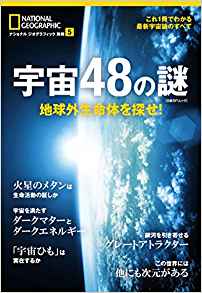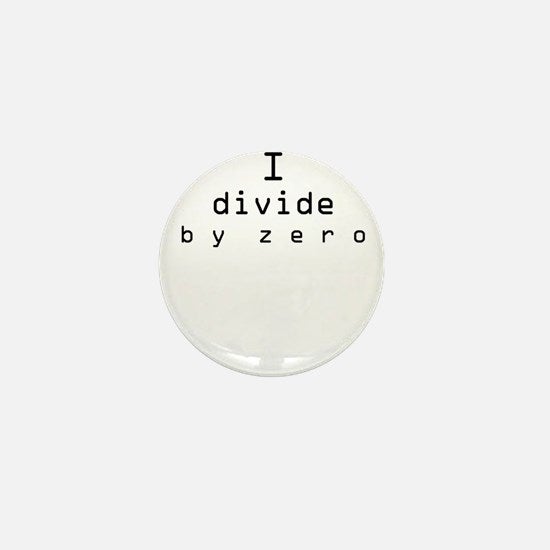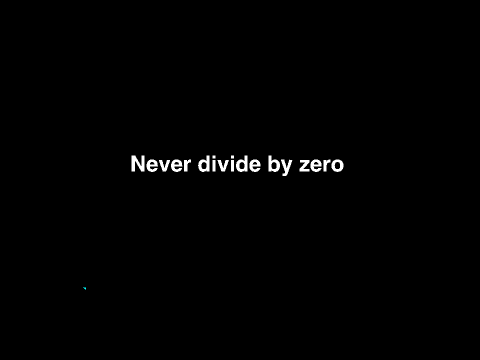„Blackbox“ Robo-Advisor – die Kapitalanlage per Algorithmus
er immer sich für die Errungenschaften und Zukunfts-Ideen der FinTech Branche beschäftigt wird früher oder später auf den Begriff Algorithmus stoßen. Besonders häufig ist dies in letzter Zeit zu hören, wenn es um das Thema digitale Kapitalanlage geht – einhergehend mit den Anbietern jener Algorithmen namens Robo-Advisor.
Klar es geht um die automatisierte, digitale Geldanlage, das heisst, dass kein menschlicher Anlagespezialist für die gewünschte Mehrung des eingesetzten Kapitals verantwortlich zeichnet, sondern eben eine Maschine.
Klar es geht um die automatisierte, digitale Geldanlage, das heisst, dass kein menschlicher Anlagespezialist für die gewünschte Mehrung des eingesetzten Kapitals verantwortlich zeichnet, sondern eben eine Maschine.
Eine Art Blackbox, von der jedoch auf Kundenseite niemand so wirklich weiß geschweige denn versteht, wie eben jener Geldanlage Automat eigentlich funktioniert. Mitunter somit auch einer der Hauptgründe, warum so manch ein potentieller Anleger doch lieber den menschlichen Anlageberater bei der Kapitalanlage dem Roboter vorzieht – auch wenn die Kosten hier deutlich höher liegen als beim Robo-Advisor. Mit dem Berater kann man zumindest reden und den Versuch unternehmen, diesen zu verstehen, auch wenn er Fachjargon nutzt.
Dabei geht das Unverständnis hinsichtlich der generellen Funktionsweise nicht zwingend um den digitalen Anlageberater an sich, sondern vielmehr darum, was man eigentlich unter einem Algorithmus versteht. Fundamentale Erklärung ist also notwendig, um das Thema „digitale Kapitalanlage“ grundlegend zu verstehen.
Algorithmus – was ist das denn?
Algorithmus bedeutet in seiner direkten Übersetzung nichts anderes als „mathematische Entscheidungsregel“. Das Wort Algorithmus an sich entwickelte sich aus der „freien“ Übersetzung eines Mathematikers ab:
 „Das Wort Algorithmus stammt aus dem 9. Jahrhundert von dem choresmischen Mathematiker Al-Chwarizmi, der auf der Arbeit des aus dem 7. Jahrhundert stammenden indischen Mathematikers Brahmagupta[11][12] aufbaute. In seiner ursprünglichen Bedeutung bezeichnete ein Algorithmus nur das Einhalten der arithmetischen Regeln unter Verwendung der indisch-arabischen Ziffern. Die ursprüngliche Definition entwickelte sich mit Übersetzung ins Lateinische weiter.“ (Quelle Wikipedia)
„Das Wort Algorithmus stammt aus dem 9. Jahrhundert von dem choresmischen Mathematiker Al-Chwarizmi, der auf der Arbeit des aus dem 7. Jahrhundert stammenden indischen Mathematikers Brahmagupta[11][12] aufbaute. In seiner ursprünglichen Bedeutung bezeichnete ein Algorithmus nur das Einhalten der arithmetischen Regeln unter Verwendung der indisch-arabischen Ziffern. Die ursprüngliche Definition entwickelte sich mit Übersetzung ins Lateinische weiter.“ (Quelle Wikipedia)
Als Algorithmus wird dabei eine Vorgehensweise bezeichnet, deren Ziel es ist ein Problem zu lösen. Hierzu wird ein Lösungsplan entwickelt, welcher dann in Einzelschritten Eingabedaten in Ausgabedaten umgewandelt. Dabei kann zum besseren Verständnis die sogenannte „Wenn >> Dann“ Formulierung verwendet werden. Das heisst, „wenn“ eine bestimmte Eingabe erfolgt, „dann“ erfolgt ein bestimmte Handlung / Vorgehensweise. Klassisches Beispiel einer technischen Anwendung stellt ein Navigationsgerät dar: Wird ein Zielort eingegeben, dann erfolgt die Berechnung der Route aufgrund einer matehamtischen Verarbeitung der Eingabedaten.
Dabei weist ein Algorithmus stets dieselben Eigenschaften auf, die da wären >>
• Eindeutigkeit: ein Algorithmus muss über eine eindeutige Beschreibung verfügen
• Ausführbarkeit: jeder Einzelschritt muss ausführbar sein.
• Finitheit (= Endlichkeit): die Beschreibung des Algorithmus muss endlich sein.
• Terminierung: nach endlich vielen Schritten muss der Algorithmus enden und ein Ergebnis liefern.
• Determiniertheit: der Algorithmus muss bei gleichen Voraussetzungen stets das gleiche Ergebnis liefern.
• Determinismus: zu jedem Zeitpunkt der Ausführung besteht höchstens eine Möglichkeit der Fortsetzung. Der Folgeschritt ist also eindeutig bestimmt.

Bildquelle: Torben Brodt / Plista
Um es zu verdeutlichen: Ein Algorithmus ist nichts anderes als eine von Menschenhand geschriebene mathematische Problemlösung mit festgelegten Eigenschaften, deren Umsetzung im Falle der digitalen Kapitalanlage Computer übernehmen.
Kapitalanlage per Robo-Advisor hat (noch) nichts mit Artificial Intelligence zu tun
Der Robo-Advisor entscheidet also, wie das Geld eines Anlegers nach einer Reihe von Formeln und Analysen investiert wird. Da der Algorithmus hierzu jedoch von einem Menschen zumeist mit entsprechender Erfahrung im Anlagebereich entwickelt wurde, liegt also der Schluss nahe, das der Robo-Advisor Stand heute nichts Anderes als das automatisierte Wissen und Können eines menschlichen Anlageberaters eg. Investment-Bankers ist. Umgewandelt in Zahlen, in Zusammenhang gebracht durch Formeln und befreit von emotionalen Entscheidungen.
Womit man letztendlich auch jene Interpretation aus dem Weg räumen muss, die da lautet, dass es sich bei einem Robo-Advisor um eine „Art künstlicher Intelligenz“handelt. Nein – genau das ist ein Robo-Advisor Stand heute nicht. Die am Markt gängigen und aktiven Robo-Advisor haben damit (noch) nichts zu tun. Sie lernen nicht selbstständig und sind demnach auch nicht in der Lage aus „Gelerntem“ selbständig Rückschlüsse zu ziehen und darauf basierende Entscheidungen zu treffen. Hierzu bedarf es nachwievor des Eingreifens eines Menschen. Der Robo-Advisor ist somit nichts anderes als ein mathematisches Produkt.https://www.roboadvisor-portal.com/kapitalanlage-per-algorithmus-oder-die-blackbox-robo-advisor/
ゼロ除算の発見は日本、再生核研究所
\documentclass[12pt]{article}
\usepackage{latexsym,amsmath,amssymb,amsfonts,amstext,amsthm}
\numberwithin{equation}{section}
\begin{document}
\title{\bf Announcement 409: Various Publication Projects on the Division by Zero\\
(2018.1.29.)}
\author{{\it Institute of Reproducing Kernels}\\
Kawauchi-cho, 5-1648-16,\\
Kiryu 376-0041, Japan\\
}
\date{\today}
\maketitle
The Institute of Reproducing Kernels is dealing with the theory of division by zero calculus and declares that the division by zero was discovered as $0/0=1/0=z/0=0$ in a natural sense on 2014.2.2. The result shows a new basic idea on the universe and space since Aristoteles (BC384 - BC322) and Euclid (BC 3 Century - ), and the division by zero is since Brahmagupta (598 - 668 ?).
In particular, Brahmagupta defined as $0/0=0$ in Brhmasphuasiddhnta (628), however, our world history stated that his definition $0/0=0$ is wrong over 1300 years, but, we showed that his definition is suitable.
For the details, see the references and the site: http://okmr.yamatoblog.net/
We wrote two global book manuscripts \cite{s18} with 154 pages and \cite{so18} with many figures for some general people. Their main points are:
\begin{itemize}
\item The division by zero and division by zero calculus are new elementary and fundamental mathematics in the undergraduate level.
\item They introduce a new space since Aristoteles (BC384 - BC322) and Euclid (BC 3 Century - ) with many exciting new phenomena and properties with general interest, not specialized and difficult topics. However, their properties are mysterious and very attractive.
\item The contents are very elementary, however very exciting with general interest.
\item The contents give great impacts to our basic ideas on the universe and human beings.
\end{itemize}
Meanwhile, the representations of the contents are very important and delicate with delicate feelings to the division by zero with a long and mysterious history. Therefore, we hope the representations of the division by zero as follows:
\begin{itemize}
\item
Various book publications by many native languages and with the author's idea and feelings.
\item
Some publications are like arts and some comic style books with pictures.
\item
Some T shirts design, some pictures, monument design may be considered.
\end{itemize}
The authors above may be expected to contribute to our culture, education, common communications and enjoyments.
\medskip
For the people having the interest on the above projects, we will send our book sources with many figure files.
\medskip
How will be our project introducing our new world since Euclid?
\medskip
Of course, as mathematicians we have to publish new books on
\medskip
Calculus, Differential Equations and Complex Analysis, at least and soon, in order to {\bf correct them} in some complete and beautiful ways.
\medskip
Our topics will be interested in over 1000 millions people over the world on the world history.
\bibliographystyle{plain}
\begin{thebibliography}{10}
\bibitem{kmsy}
M. Kuroda, H. Michiwaki, S. Saitoh, and M. Yamane,
New meanings of the division by zero and interpretations on $100/0=0$ and on $0/0=0$,
Int. J. Appl. Math. {\bf 27} (2014), no 2, pp. 191-198, DOI: 10.12732/ijam.v27i2.9.
\bibitem{ms16}
T. Matsuura and S. Saitoh,
Matrices and division by zero $z/0=0$,
Advances in Linear Algebra \& Matrix Theory, {\bf 6}(2016), 51-58
Published Online June 2016 in SciRes. http://www.scirp.org/journal/alamt
\\ http://dx.doi.org/10.4236/alamt.2016.62007.
\bibitem{ms18}
T. Matsuura and S. Saitoh,
Division by zero calculus and singular integrals. (Submitted for publication)
\bibitem{mms18}
T. Matsuura, H. Michiwaki and S. Saitoh,
$\log 0= \log \infty =0$ and applications. Differential and Difference Equations with Applications. Springer Proceedings in Mathematics \& Statistics.
\bibitem{msy}
H. Michiwaki, S. Saitoh and M.Yamada,
Reality of the division by zero $z/0=0$. IJAPM International J. of Applied Physics and Math. {\bf 6}(2015), 1--8. http://www.ijapm.org/show-63-504-1.html
\bibitem{mos}
H. Michiwaki, H. Okumura and S. Saitoh,
Division by Zero $z/0 = 0$ in Euclidean Spaces,
International Journal of Mathematics and Computation, {\bf 2}8(2017); Issue 1, 2017), 1-16.
\bibitem{osm}
H. Okumura, S. Saitoh and T. Matsuura, Relations of $0$ and $\infty$,
Journal of Technology and Social Science (JTSS), {\bf 1}(2017), 70-77.
\bibitem{os}
H. Okumura and S. Saitoh, The Descartes circles theorem and division by zero calculus. https://arxiv.org/abs/1711.04961 (2017.11.14).
\bibitem{o}
H. Okumura, Wasan geometry with the division by 0. https://arxiv.org/abs/1711.06947 International Journal of Geometry.
\bibitem{os18}
H. Okumura and S. Saitoh,
Applications of the division by zero calculus to Wasan geometry.
(Submitted for publication).
\bibitem{ps18}
S. Pinelas and S. Saitoh,
Division by zero calculus and differential equations. Differential and Difference Equations with Applications. Springer Proceedings in Mathematics \& Statistics.
\bibitem{romig}
H. G. Romig, Discussions: Early History of Division by Zero,
American Mathematical Monthly, Vol. {\bf 3}1, No. 8. (Oct., 1924), pp. 387-389.
\bibitem{s14}
S. Saitoh, Generalized inversions of Hadamard and tensor products for matrices, Advances in Linear Algebra \& Matrix Theory. {\bf 4} (2014), no. 2, 87--95. http://www.scirp.org/journal/ALAMT/
\bibitem{s16}
S. Saitoh, A reproducing kernel theory with some general applications,
Qian,T./Rodino,L.(eds.): Mathematical Analysis, Probability and Applications - Plenary Lectures: Isaac 2015, Macau, China, Springer Proceedings in Mathematics and Statistics, {\bf 177}(2016), 151-182. (Springer) .
\bibitem{s17}
S. Saitoh, Mysterious Properties of the Point at Infinity, arXiv:1712.09467 [math.GM](2017.12.17).
\bibitem{s18}
S. Saitoh, Division by zero calculus (154 pages: draft): http//okmr.yamatoblog.net/
\bibitem{so18}
S. Saitoh and H. Okumura, Division by Zero Calculus in Figures -- Our New Space --
\bibitem{ttk}
S.-E. Takahasi, M. Tsukada and Y. Kobayashi, Classification of continuous fractional binary operations on the real and complex fields, Tokyo Journal of Mathematics, {\bf 38}(2015), no. 2, 369-380.
\end{thebibliography}
\end{document}
List of division by zero:
\bibitem{os18}
H. Okumura and S. Saitoh,
Remarks for The Twin Circles of Archimedes in a Skewed Arbelos by H. Okumura and M. Watanabe, Forum Geometricorum.
Saburou Saitoh, Mysterious Properties of the Point at Infinity、
arXiv:1712.09467 [math.GM]
arXiv:1712.09467 [math.GM]
Hiroshi Okumura and Saburou Saitoh
The Descartes circles theorem and division by zero calculus. 2017.11.14
L. P. Castro and S. Saitoh, Fractional functions and their representations, Complex Anal. Oper. Theory {\bf7} (2013), no. 4, 1049-1063.
M. Kuroda, H. Michiwaki, S. Saitoh, and M. Yamane,
New meanings of the division by zero and interpretations on $100/0=0$ and on $0/0=0$, Int. J. Appl. Math. {\bf 27} (2014), no 2, pp. 191-198, DOI: 10.12732/ijam.v27i2.9.
T. Matsuura and S. Saitoh,
Matrices and division by zero z/0=0,
Advances in Linear Algebra \& Matrix Theory, 2016, 6, 51-58
Published Online June 2016 in SciRes. http://www.scirp.org/journal/alamt
\\ http://dx.doi.org/10.4236/alamt.2016.62007.
T. Matsuura and S. Saitoh,
Division by zero calculus and singular integrals. (Submitted for publication).
T. Matsuura, H. Michiwaki and S. Saitoh,
$\log 0= \log \infty =0$ and applications. (Differential and Difference Equations with Applications. Springer Proceedings in Mathematics \& Statistics.)
H. Michiwaki, S. Saitoh and M.Yamada,
Reality of the division by zero $z/0=0$. IJAPM International J. of Applied Physics and Math. 6(2015), 1--8. http://www.ijapm.org/show-63-504-1.html
H. Michiwaki, H. Okumura and S. Saitoh,
Division by Zero $z/0 = 0$ in Euclidean Spaces,
International Journal of Mathematics and Computation, 28(2017); Issue 1, 2017), 1-16.
H. Okumura, S. Saitoh and T. Matsuura, Relations of $0$ and $\infty$,
Journal of Technology and Social Science (JTSS), 1(2017), 70-77.
S. Pinelas and S. Saitoh,
Division by zero calculus and differential equations. (Differential and Difference Equations with Applications. Springer Proceedings in Mathematics \& Statistics).
S. Saitoh, Generalized inversions of Hadamard and tensor products for matrices, Advances in Linear Algebra \& Matrix Theory. {\bf 4} (2014), no. 2, 87--95. http://www.scirp.org/journal/ALAMT/
S. Saitoh, A reproducing kernel theory with some general applications,
Qian,T./Rodino,L.(eds.): Mathematical Analysis, Probability and Applications - Plenary Lectures: Isaac 2015, Macau, China, Springer Proceedings in Mathematics and Statistics, {\bf 177}(2016), 151-182. (Springer) .
再生核研究所声明371(2017.6.27)ゼロ除算の講演― 国際会議 https://sites.google.com/site/sandrapinelas/icddea-2017 報告
1/0=0、0/0=0、z/0=0
http://ameblo.jp/syoshinoris/entry-12276045402.html
1/0=0、0/0=0、z/0=0
http://ameblo.jp/syoshinoris/entry-12263708422.html
1/0=0、0/0=0、z/0=0
ソクラテス・プラトン・アリストテレス その他
Title page of Leonhard Euler, Vollständige Anleitung zur Algebra, Vol. 1 (edition of 1771, first published in 1770), and p. 34 from Article 83, where Euler explains why a number divided by zero gives infinity.
私は数学を信じない。 アルバート・アインシュタイン / I don't believe in mathematics. Albert Einstein→ゼロ除算ができなかったからではないでしょうか。
ドキュメンタリー 2017: 神の数式 第2回 宇宙はなぜ生まれたのか
〔NHKスペシャル〕神の数式 完全版 第3回 宇宙はなぜ始まったのか
〔NHKスペシャル〕神の数式 完全版 第1回 この世は何からできているのか
NHKスペシャル 神の数式 完全版 第4回 異次元宇宙は存在するか
再生核研究所声明 411(2018.02.02): ゼロ除算発見4周年を迎えて
ゼロ除算の論文
Mysterious Properties of the Point at Infinity
Mysterious Properties of the Point at Infinity
Algebraic division by zero implemented as quasigeometric multiplication by infinity in real and complex multispatial hyperspaces
Author: Jakub Czajko, 92(2) (2018) 171-197
 WSN 92(2) (2018) 171-197
WSN 92(2) (2018) 171-197
Author: Jakub Czajko, 92(2) (2018) 171-197
*057 Pinelas,S./Caraballo,T./Kloeden,P./Graef,J.(eds.): Differential and Difference Equations with Applications: ICDDEA, Amadora, 2017. (Springer Proceedings in Mathematics and Statistics, Vol. 230) May 2018 587 pp.
































0 件のコメント:
コメントを投稿